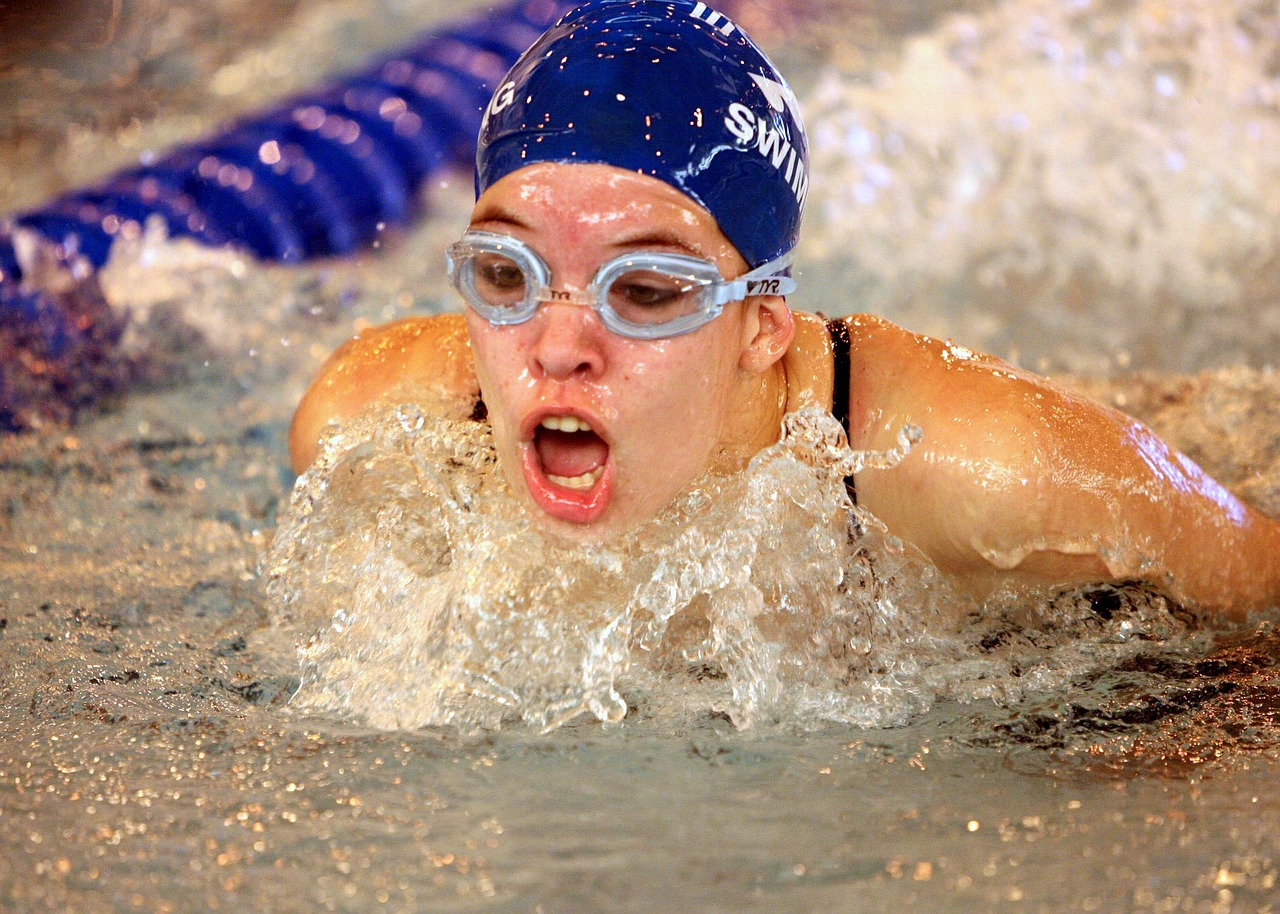Open Turn in Swimming: Everything You Need to Know About the Open Turn in Swimming
Swimming is an exhilarating sport that requires both skill and technique. One essential skill that every swimmer should master is the open turn.
Whether you are a competitive swimmer or a recreational one, understanding and executing the open turn can greatly improve your performance in the pool.
In this article, we will delve into the world of open turns in swimming, exploring what they are, how they differ from flip turns, and providing a step-by-step guide on how to perform them effectively.
Advertisements
So, let’s dive in and discover everything you need to know about the open turn in swimming.
What is an Open Turn in Swimming?
An open turn in swimming is a technique used to change direction at the end of a lap or length in the pool.

Unlike flip turns, which involve somersaulting and pushing off the wall, open turns are performed by touching the wall with your hand and making a quick rotation to face the opposite direction.
Open turns are often preferred by beginner swimmers or those who find flip turns challenging. However, open turns are not limited to beginners and can be utilized by swimmers of all levels.
Advertisements
They are particularly useful in backstroke and butterfly events, where the swimmer is required to touch the wall before turning.
Differences Between Open Turns and Flip Turns
Open turns and flip turns are two distinct techniques used to change direction in swimming.
While open turns involve touching the wall and rotating, flip turns require swimmers to perform a somersault underwater and push off the wall with their feet.
Flip turns are generally faster and more efficient for seasoned swimmers, as they allow for quicker transitions and maintain momentum.

However, open turns have their advantages, particularly for beginners or those who struggle with the coordination and timing required for flip turns. Open turns also allow for better control and breathing during longer distance swims.
The Benefits of Mastering the Open Turn in Swimming
- It allows swimmers to maintain their momentum and speed during a race. By executing a smooth and efficient open turn, swimmers can shave off precious seconds from their overall race time.
- Open turns are especially useful for longer distances, such as in freestyle events. Unlike flip turns, open turns do not require swimmers to hold their breath for long, allowing for better oxygen intake and overall endurance.
- A well-executed open turn can give swimmers a psychological advantage. It instills confidence and a sense of control, helping swimmers stay focused and motivated throughout their race.
Step-By-Step guide on How to do an Open Turn in Swimming
Performing an open turn in swimming is a skill that can be learned and perfected with practice. Follow these step-by-step instructions to execute an open turn effectively:
- As you approach the wall, maintain a steady and controlled speed.
- Reach out with your lead arm and touch the wall with your hand.
- Simultaneously, rotate your body in the opposite direction, positioning yourself on your side.
- Extend your trailing arm along the surface of the water, using it as a pivot point.
- Kick your legs in a scissor-like motion to propel yourself in the opposite direction.
- Streamline your body and resume your stroke as you push off the wall.
Remember, practice makes perfect. Take your time to familiarize yourself with each step and focus on maintaining a smooth and fluid motion throughout the open turn.
Below is a video that practicalized how to do an open turn in swimming:
Common Mistakes to Avoid During an Open Turn
While learning to perform an open turn, it’s essential to be aware of common mistakes that can hinder your progress. Avoid these mistakes to ensure a successful open turn:
-
Failing to maintain momentum: A common error is slowing down or stopping before reaching the wall. To execute a smooth open turn, it’s crucial to maintain a steady speed and glide into the wall.
- Poor body positioning: Incorrect body positioning can lead to a less efficient turn. Ensure you are on your side when touching the wall, allowing for a smooth rotation.
- Neglecting the push-off: After touching the wall, it’s important to generate power and momentum by pushing off forcefully. Neglecting the push-off will result in a slower turn and a loss of speed.
By being aware of these common mistakes and actively working to avoid them, you will be well on your way to mastering the open turn in swimming.
READ ALSO: How the Right Swimming Warm Up Routine Can Take Your Performance to the Next Level
Open Turn Strategies for Different Swimming Strokes
The open turn technique can be adapted to suit different swimming strokes. Here are some strategies for executing open turns with various strokes:
-
Freestyle: For freestyle events, the open turn can be performed by reaching out with your lead arm and touching the wall with your hand.
Rotate your body to face the opposite direction while maintaining a streamlined position. Kick your legs to propel yourself off the wall and resume your stroke. -
Backstroke: In backstroke events, approach the wall on your back, keeping your eyes fixed on the ceiling.
Reach out and touch the wall with your hand, then rotate onto your stomach while maintaining a streamlined position. Push off the wall with your feet and resume your stroke. -
Butterfly: Similar to freestyle, the open turn in butterfly involves reaching out with your lead arm and touching the wall.
Rotate your body to face the opposite direction while keeping your legs together. Kick your legs to generate power and push off the wall, resuming your butterfly stroke.
By adapting the open turn technique to different strokes, you can maintain efficiency and maximize your performance in each swimming event.
Tips for a Faster Open Turn in Swimming
If you’re aiming to improve your open turn speed, consider incorporating these tips into your training routine:
- Practice timing: Focus on the timing of your turn, ensuring that you touch the wall at the peak of your stroke. This will allow for a smoother rotation and a quicker push-off.
- Increase leg strength: Strong leg muscles are crucial for generating power during an open turn. Incorporate leg exercises such as squats and lunges into your training regimen to improve leg strength.
- Streamline your body: Maintaining a streamlined body position is key to reducing drag and improving speed. Practice streamlining drills, such as gliding in a streamlined position, to enhance your technique.
By implementing these tips into your training, you can enhance your open turn speed and overall performance in the pool.

Training Exercises to Improve Your Open Turn Technique
To improve your open turn technique, consider incorporating these training exercises into your swimming routine:
-
Wall touches: Swim laps where the focus is solely on executing smooth and controlled open turns. Touch the wall with your hand, rotate, and push off, ensuring each turn is executed flawlessly.
-
Underwater dolphin kicks: Utilize underwater dolphin kicks to enhance the power and speed of your open turn. Practice kicking off the wall and maintaining a streamlined position for an extended distance underwater.
- Endurance training: Open turns are particularly useful in longer distance events. Incorporate endurance training into your routine to build stamina and improve your overall performance during open turns.
By dedicating time to these training exercises, you can refine your open turn technique and become a more efficient swimmer.
READ ALSO: What Muscles Does Freestyle Swimming Work On?
Advanced Techniques for a Competitive Open Turn in Swimming
For competitive swimmers looking to take their open turns to the next level, consider incorporating these advanced techniques:
-
Double-arm pull: As you rotate during the open turn, utilize a double-arm pull to generate additional power. This technique involves pulling both arms towards your chest before initiating the kick-off.
-
Dolphin kick off the wall: Instead of a scissor kick, perform a dolphin kick off the wall. This powerful undulating motion can provide an extra boost of speed and momentum.
-
Quick transition: Work on reducing the time it takes to transition from the touch to the push-off. Focus on minimizing any unnecessary movements and maximizing the efficiency of your turn.
By mastering these advanced techniques, you can gain a competitive edge in your swimming races.
Examples of Successful Open Turns in Professional Swimming
Professional swimmers demonstrate exemplary open turns, showcasing the effectiveness of this technique.

Let’s examine a few examples of successful open turns in professional swimming:
-
Michael Phelps: The most decorated Olympian of all time, Michael Phelps, was renowned for his impeccable open turns.
His smooth transitions, quick rotations, and powerful push-offs were instrumental in his success. -
Katie Ledecky: Another swimming sensation, Katie Ledecky, demonstrates exceptional open turns in her freestyle events.
Her flawless technique and seamless turns contribute to her incredible speed and dominance in the pool. -
Caeleb Dressel: Known for his explosive power and speed, Caeleb Dressel utilizes open turns to his advantage.
His lightning-fast transitions and powerful push-offs allow him to maintain momentum and outpace his competitors.
By studying these professional swimmers and their open turn techniques, you can gain valuable insights to incorporate into your own swimming practice.
READ ALSO: Everything You Need to Know About Sprinting in Swimming
Conclusion
The open turn is a fundamental skill in swimming that can significantly impact your performance in the pool.
Whether you are a competitive swimmer aiming for faster race times or a recreational swimmer seeking to improve your technique, mastering the open turn is essential.
By understanding what an open turn is, how it differs from a flip turn, and following the step-by-step guide provided, you can enhance your swimming abilities and gain a competitive edge.
Remember to avoid common mistakes, adapt the open turn to different strokes, and practice advanced techniques to refine your skills.
So, dive in, practice, and enjoy the thrill of executing a perfect open turn. And if you want to read more answers to difficult sports questions, don’t forget to subscribe to our newsletter for exclusive content and insights.
Subscribe to our newsletter!



